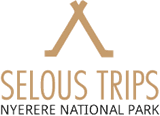If you want to see wildlife and lots of it, Nyerere National Park delivers. In particular, during the dry season when the bush offers less protection and the animals are driven to the waterholes and river. It’s this vast population of mammals that leads Selous to be commonly referred to as ‘the last wilderness in Africa’.
There are now fewer than 5000 wild dogs (New Scientist 24.05.1997), Lycaon pictus, on the plains of Africa. Some estimates put the figure as low as 3000. Wild dogs are now endangered; only six nations hold populations larger than 100 individuals. (Journal of Zoology June, 1995). Selous Game Reserve has the largest population of Wild Dogs in Africa (estimated to be 12% of total population left).
You never know exactly what you’ll spot on a game drive, walking safari or river safari but you’re likely to see creatures both great and small, as well as predators and prey. While most safari lovers enjoy spotting animals like the big five, sightings of lesser-known animals and birds are equally rewarding.
While this list isn’t comprehensive it will give you an idea of what wildlife you might see:
The big five:
- Lions – During the dry season, hungry lions stalk the waterholes looking for prey. Seeing lions hunting down impala or other smaller game is not uncommon. There are estimated to be around 4,000 lion in Selous, making it one of the largest lion habitats in Africa;
- Leopard – Leopard are endangered animals, nevertheless, they do live in Selous and sightings are possible;
- Elephant – Once packed with over 100,000 elephants 40 years ago, the population has been reduced to just 15,000 elephants by poaching. However, this still represents a sizeable population and sightings are common. It is hoped that visitor fees and improved park management will reduce poaching and increase elephant numbers;
- Rhino – Also endangered but still present in Selous although sightings are rare. WWF have a Rhino Conservation Project in the Selous and are hoping to introduce more animals into the Reserve in the future;
- Buffalo – Along with the lion and hippo population, the buffalo population is one of the greatest for its species anywhere in Africa. With estimated numbers standing at over 120,000, you are highly likely to see buffalo here.
Commonly spotted mammals and reptiles
- Wildebeest – Although there aren’t as many wildebeest as there are buffalo, the wildebeest population is huge with around 100,000 estimated animals;
- Zebra – Around 35,000 zebras live, graze and raise their young at Selous;
- Impala – Approximately 25,000 impala live here, always on the alert for the predators that prey on them;
- Giraffe – Giraffe are also prevalent and a majestic sight around the lakes and waterholes;
- Hippo – Hippo abound in the river and can often be seen with birds perching on their backs;
- African wild dog – Also known as painted dog, because of their distinctive markings, African wild dog are endangered so sightings are rare but not impossible;
- Greater kudu;
- Waterbuck;
- Bushbuck;
- Hartebeest;
- Warthog;
- Sable;
- Puku antelope;
- Topi;
- Spotted hyena;
- Side striped jackal;
- Colobus monkey;
- Crocodile.
Please remember this list is not exhaustive! There are many other mammals in Selous and your guide will introduce you to them as sightings occur.
Birds
Selous is fantastic for birding at any time of the year since over 400 different species have been recorded here.
Even if you know little about birds before your safari, your guide will point out the colourful birdlife to you, and many of our guests soon find that the birdlife is as fascinating as the other wildlife. Waterbirds are prolific in the lakes, river banks and sandbanks as are other bird species.
Some of the most commonly spotted birds are:
- Mangrove kingfisher;
- Pink-backed pelican;
- African skimmer;
- Kingfisher – Including several different species such as grey-hooded, pied and malachite kingfisher;
- Fish eagle;
- Egrets and heron – There are many different species;
- Yellow billed stork;
- Palm-nut vulture;
- Bee-eaters – Including carmine and white-fronted bee-eater colonies and Boehm’s bee-eater;
- Trumpeter hornbill;
- Purple-crested turaco;
- Owl – Including Pel’s fishing owl and pearl-spotted owl;
- Brown-breasted barbet;
- Freckled nightjars;
- Broad-billed roller
- Green-billed coucal;
- Red-winged warbler;
- Black cuckoo-shrike;
- Bennett’s woodpecker;
- Dickinson’s kestrel;
- Layard’s black-headed weavers;
- Purple-banded sunbird;
- Von der Decken’s hornbill.
This is just a tiny selection of the wildlife you can see in Selous. If there’s a particular species you’re keen to see please contact us and we’ll let you know the best time of year to visit.
If you’re not overwhelmed by the Selous then you have never lived!














